1 June, 2000
Land ho!
Thursday June 1, 2000
We arrived back in St. John's yesterday afternoon. After a week out in the
ocean, it was great to see land again!
The same pilot boat that led us out of the harbor last week met us as we
neared the rocky cliffs. It pulled up alongside the Healy, and the pilot
scrambled up a rope ladder onto the Healy's deck. It looked pretty scary,
but I guess the pilot is used to it. Every day he guides the large ships in
and out of the harbor. He must know every rock in the channel by heart. When
we got to Pier 17, the crew used thick ropes called mooring lines to tie the
ship to the pier. The ropes have to be strong enough to keep big ships like
the Healy from drifting off!
We'll be here for two days. Some of the scientists left the ship to go home,
and several new scientists will be joining us. On Saturday we'll fill up the
gas tanks before heading north in search of ice.
Port calls (when the ship docks at a pier) are real morale boosters for the
Healy's crew. Some of the crew have been out at sea since last October. When
the Healy is underway, they work around the clock. The only chance they get
to take a break is when the ship is in port.
Susan and I decided to take advantage of this port call to do some
sightseeing. We had heard that a large iceberg had grounded in the harbor at
Bulls Bay. People had also told us that there were herds of caribou along
the highway. So we rented a car with our roommate, Carol, and headed out of
St. John's along the southern shore of Newfoundlandís Avalon Peninsula.
The route we followed is known as Irish Loop. It's named for the Irish
settlers who came to Newfoundland 400 years ago to fish and farm. Today
their descendants still speak with a lilting Irish brogue. I was surprised
to hear Irish accents in Newfoundland!
The coast of Newfoundland is very beautiful - rocky cliffs rise right out of
the sea. Our first stop was Cape Spear, which is the easternmost point on
the North American continent. Someone told us that if we turned our backs to
the Atlantic Ocean there, we would be facing every other person in North
America! Do you think that's true?
There are two lighthouses at Cape Spear. The older of the two was built in
1836, and is the oldest lighthouse in Newfoundland. It guided fishermen to
safety for more than 100 years. A new one was built to replace it in 1955,
and it is still in operation. Today the lighthouses are automated, but in
the past, people had to keep the lights lit. At lunch we talked to a man
whose father had been a lighthouse keeper 70 years ago. They lived on Belle
Island off the north coast of Newfoundland with one other family. A ship
brought them food twice a year. They had to grow the rest themselves. Can
you imagine growing up like that?! I think I would be lonely.
We had a great day touring the island. I bet you're dying to know if we ever
found the iceberg and the caribou. You'll have to click on Susan's page to
find out!
Susanís Entry
Today.
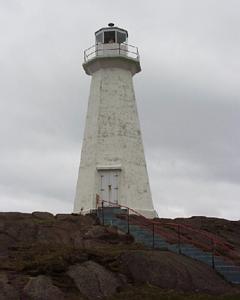
Cape Spear lighthouse is the easternmost point on the North American continent. This modern tall white lighthouse was built in 1955.
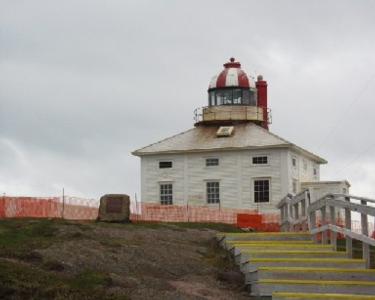
The former lighthouse at Cape Spear was built in 1836.
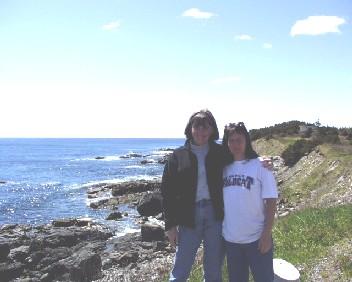
Susan and Janice along the rocky coast of Newfoundland.
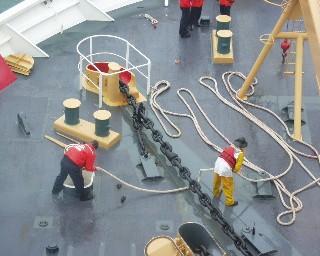
Line or rope is taken out of the hold below the bow deck.

The pilot is climbing up the rope ladder onto the Healy.
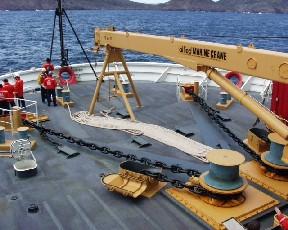
The line is ready for mooring at Pier 17 in St. John's, Newfoundland
Contact the TEA in the field at
.
If you cannot connect through your browser, copy the
TEA's e-mail address in the "To:" line of
your favorite e-mail package.
|
